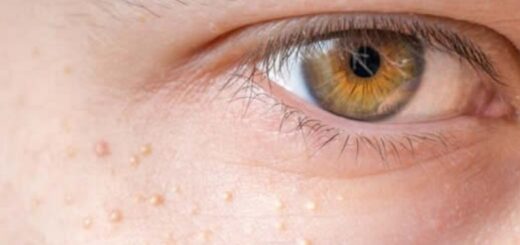What is Catatonia?

Catatonia, a condition that disrupts brain function, is often associated with neuropsychiatric and psychiatric disorders. This condition often occurs as a symptom of psychiatric disorders such as schizophrenia, bipolar disorder or major depression. In this case, the person cannot respond appropriately to what is happening around him and often exhibits abnormal behavior. Symptoms such as communication disorders, lack of movement, and strange postures are among the features that define the catatonic state.
Catatonia is a condition that can seriously affect an individual’s quality of life. With early diagnosis and effective treatment, it is possible for people to manage this condition and return to their normal lives. However, every situation is different, so it is important to consult an expert.
What Causes Catatonia?
Catatonia is a neuropsychiatric condition that affects an individual’s emotional, mental and physical states. The underlying causes can be complex and vary from individual to individual. Some factors that cause catatonia include:
Schizophrenia: Catatonia is often associated with schizophrenia spectrum disorders. Schizophrenia can cause impairments in perception of reality, thought processes, and emotional responses.
Bipolar Disorder: Bipolar disorder is a condition that fluctuates between manic episodes and depressive episodes. Catatonia may occur during depressive phases of bipolar disorder.
Major Depression: In cases of major depression, symptoms of catatonia may be observed. In this case, the individual’s energy decreases, his movements are restricted, and communication problems may arise.
Neurological Disorders: Some neurological diseases or lesions can also cause catatonia. This may be due to organic causes that affect brain functions.
Medications: Some psychotropic medications can cause catatonia-like symptoms. Catatonia may develop in case of incorrect dosage adjustment or long-term use of these drugs.
Intense Stress and Trauma: Extreme stress, traumatic events, or bad experiences during childhood can trigger catatonic symptoms.
Somatic Diseases: Some serious somatic diseases, especially neurological and systemic diseases, can lead to catatonic symptoms.
What are the Types of Catatonia?
Catatonia is a condition characterized by a variety of symptoms, and these symptoms may be based on different underlying causes. Some of the main varieties that carry catatonic symptoms are:
Catatonia-type schizophrenia: This condition occurs as part of the schizophrenia spectrum. Catatonic symptoms such as lack of movement, strange postures, and lack of speech are often observed in individuals diagnosed with schizophrenia.
Depression with catatonia: Catatonia, which is associated with major depression, can occur in cases of major depression. Individuals may struggle with symptoms such as extreme inactivity, lack of speech, and decreased emotional responsiveness.
Bipolar disorder with catatonia: Catatonia may occur in the depressive phases of bipolar disorder or as a condition accompanying manic attacks. This can cause significant fluctuations in energy levels.
Catatonia of neurological origin: It includes catatonic symptoms that occur as a result of some neurological diseases, lesions or brain damage. These situations are usually due to organic causes.
Drug-induced catatonia: It is a type of catatonia that can occur as a side effect of certain psychotropic drugs. It may develop in case of incorrect adjustment of the drug dose or long-term use.
Catatonia due to somatic diseases: Serious systemic or neurological diseases can cause catatonic symptoms. This condition usually occurs due to underlying somatic health problems.
What are the symptoms of catatonia?
Catatonia is a condition associated with various neuropsychiatric and psychiatric disorders. Symptoms of catatonia may vary from individual to individual, but generally outline:
Lack of Movement (Akinesia): Catatonic individuals often exhibit prolonged immobility. Minimal or no movement may occur while sitting, lying or standing.
Abnormal Postures: Weird or abnormal body postures are common. The individual may involuntarily exhibit strange postures.
Repetitive and Meaningless Movements: Some catatonic individuals may make repetitive, meaningless and automatic movements. This may occur in ways such as waving the hands, turning the head, or moving in a certain rhythm.
Speech Disorders: Lack of speech or meaningless conversations are also among the symptoms of catatonia. The individual may show a significant decrease in speech ability.
Failure to Respond to Environmental Stimuli: Catatonic individuals may have difficulty responding appropriately to environmental stimuli. They may become insensitive to the outside world.
Over-adaptation or Stubbornness: Catatonic individuals may tend to over-adapt or over-resistance to a situation.
Lack of Emotional Expression: A significant decrease in emotional expressions can be observed. Individuals may have difficulty expressing their emotional reactions.
Interesting or Absurd Behaviors: Individuals with a catatonic state may exhibit unusual or absurd behavior that can often be difficult to understand by those around them.
How Is Catatonia Diagnosed?
Catatonia is usually diagnosed after a detailed evaluation by a specialist psychiatrist or neurologist. The diagnostic process is done by taking into account the onset, severity, frequency and other characteristics of the symptoms. Here are some methods used to diagnose catatonia:
Clinical Evaluation: A qualified healthcare professional evaluates the general health status of the individual showing symptoms of catatonia. This includes factors such as onset, duration and severity of symptoms.
Mental Status Examination: A psychiatric examination provides information about an individual’s thought processes, perceptions, emotional state, and other cognitive functions.
Medical History and Physical Examination: A medical history and physical examination is performed to rule out organic factors that may be the cause of catatonic symptoms. Neurological examination is intended to evaluate neurological disorders or brain lesions.
Laboratory Tests: Blood tests and other laboratory examinations may be used to evaluate thyroid function, electrolyte balance, and other potential physical health problems.
Imaging Tests: Brain imaging techniques, especially magnetic resonance imaging (MRI) or computed tomography (CT) scans, can be used to identify neurological causes.
Psychiatric Evaluation: The specialist psychiatrist evaluates the individual’s psychiatric history and other psychiatric disorders. This is aimed at understanding the underlying causes of catatonia symptoms.
Evaluation According to DSM-5 Criteria: DSM-5 (Diagnostic and Statistical Manual of Mental Disorders) criteria prepared by the American Psychiatric Association are used to diagnose catatonia.
How to Treat Catatonia?
Catatonia treatment may vary depending on the individual’s symptoms and underlying causes. Treatment usually requires a multidisciplinary approach and should be guided by a specialist psychiatrist or neurologist.
Treatment of the Underlying Cause
If catatonia is a symptom of a psychiatric disorder, treatment of this underlying disorder is aimed first. Conditions such as schizophrenia, bipolar disorder or depression are treated with appropriate medications.
Medication
Antipsychotic medications are frequently used to treat catatonic symptoms. Drug treatment may vary depending on the patient’s specific condition, and the type and dosage of drugs to be used within the scope of treatment should be determined by a specialist psychiatrist or neurologist.
Electroconvulsive Therapy (ECT)
It is an option used to manage emergencies or conditions that do not respond to medication. It is especially applicable for major depression and severe catatonic states.
Supportive Care
Supportive therapies can be applied to increase the individual’s participation in daily life activities and improve social skills. It is also important to care for the individual and protect their safety.
Therapy
Individual therapy, group therapy, or family therapy can help strengthen the catatonic individual’s emotional and social skills. These therapies may be effective in addressing underlying psychosocial factors.
Hospitalization
When catatonia is severe or requires urgent intervention, hospitalization may be considered. This may be necessary to ensure the safety of the individual and begin effective treatment.
Physical Rehabilitation
If muscle weakness has developed due to lack of movement, physical therapy and rehabilitation programs can help increase an individual’s physical health and activity.











